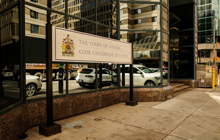Burden of proof for misrepresentation in tax reassessments is high — and rests with the CRA

In a recent Tax Court of Canada case, the Canada Revenue Agency's proof was flimsy, says Canadian accountant and tax lawyer David J Rotfleisch
Introduction
 |
David J Rotfleisch, CPA, JD is the founding tax lawyer of Taxpage.com and Rotfleisch & Samulovitch P.C., a Toronto-based boutique tax law corporate law firm. |
In the Tax Court of Canada case Burke v. The King, 2022, the Canada Revenue Agency conducted tax reassessments for the tax years 2014, 2015, and 2016, expressing doubts about the reported amounts in taxpayer Mr. Burke's tax returns. Since Mr. Burke recorded most of his business dealings through handwritten notes and ledgers, the CRA deemed his bookkeeping and records unreliable.
However, the CRA commenced its action against Mr. Burke in 2018, meaning the 2014 and 2015 tax years were statute barred from tax reassessment under s.152(4) of the Income Tax Act (R.S.C., 1985), c. 1. To reassess the statute barred returns for 2014 & 2015, the CRA must demonstrate misrepresentation on the part of Mr. Burke through "neglect, carelessness or wilful deceit." The CRA also used a net worth assessment (NWA) under section 152(7) of the ITA for 2014, 2015 & 2016. However, for the CRA's , it would have to prove misrepresentation to reassess 2014 & 2015 but not 2016.
The CRA also imposed penalties under section s.163(2) for all three years, alleging gross negligence and false statements. However, the CRA's lawyer admitted that they had not met the burden of proof for the tax penalties, and the court confirmed their cancellation. Despite this, the CRA maintained that they had satisfied the burden of proof regarding the misrepresentation burden for the statute barred years 2014 and 2015.
Case facts and legal issues before the Tax Court of Canada
Mr. Burke's sole proprietor business, Abstract Design and Painting, was audited by the CRA in 2018. His habit of keeping hand-written records of his business activities was considered rudimentary and unsatisfactory by the CRA. His net worth assessment was conducted for 2014, 2015, and 2016 for which his Canadian tax litigation lawyer was able to reduce some of his unreported income in 2014 & 2015. Before filing an appeal, Mr. Burke decided to discontinue using a tax litigation lawyer and decided to represent himself. Subsequently, while representing himself, he was able to reduce some of his net worth assessment but was unable to strike out the penalties imposed under s.163(2) of the ITA.
Mr. Burke mentioned a non-taxable source of income, proceeds from the sale of his portion of the matrimonial home after his divorce in 2005. However, the tax auditor ignored this in the determination of his net worth assessment along with other evidence Mr. Burke presented such as a safety deposit box during this period where Mr. Burke claimed to have kept the cash.
The tax auditor's failure to observe certain financial transactions and his incomplete analysis of Mr. Burke's finances raised questions about the accuracy of the tax audit. Despite the tax auditor failing to provide references or evidence for a comparison between Mr. Burke's financial records in 2016 and the statute-barred years (2014 & 2015), he justified the tax reassessment of the latter, based on his findings of the former. Therefore, the tax auditor's decision to reassess Mr. Burke for 2014 & 2015 was unsubstantiated and lacked supporting information.
Two key issues in Mr. Burke's case required the court's adjudication:
- For the years 2014 & 2015, has the CRA met the burden of proof to establish:
- Misrepresentation in the return.
- Neglect, carelessness, or wilful default as a cause of the misrepresentation in the return - to reassess the statute-barred years.
- If the CRA meets the burden of proof, has the alternative tax assessment through the net worth audit been demolished or reduced by Mr. Burke for the years 2014, 2015 & 2016?
CRA's failure to meet the burden of proof
The CRA is barred by s.152(4) from reassessing tax returns that go back further than three years. This prevents the CRA from unduly reassessing a taxpayer that may not have the requisite 'receipts' to justify their returns. To reassess beyond this period, the onus was on the CRA to prove that Mr. Burke had misrepresentations in his tax return. This misrepresentation is only actionable if is owing to neglect, carelessness or wilful default on the part of the taxpayer. The CRA strategy to prove this misrepresentation relied on the report of its tax auditor which alleged disparities between Mr. Burke's reported income and his net worth assessment.
The CRA assertion of misrepresentation was flimsy due to two chief reasons:
- The tax auditor failed to account for Mr. Burke's non-taxable income. Mr. Burke received non-taxable income from the sale of his portion of the matrimonial home after his divorce in 2005 and kept most of the receipts as cash in a safety deposit box. When Mr. Burke was unable to work due to an accident in 2014, he used this money to supplement his income. The CRA tax auditor not only failed to account for this income but also refused to accept a safety deposit rented during the duration of this period as evidence of his cash holdings.
- The CRA failed to provide sufficient evidence to substantiate their claims of misrepresentation for the statute-barred years. The CRA primarily relied upon the NWA of 2016 and supplanted it in the years 2014-2015. The court rejected this notion stating that the only assertion of misrepresentation is the discrepancy between his tax returns and net worth audit results. The burden of proof to demonstrate misrepresentation is much higher. Furthermore, the court found Mr. Burke's handwritten records to be more reliable than the tax auditor's report, finding the latter to omit crucial deductions from the computation of Mr. Burke's tax returns.
Alternative assessment through the net worth audit
Mr. Burke did not have to reduce or diminish his tax owing for 2014 or 2015 since the reassessment was deemed to be time-barred by statute. The CRA's failure to appropriately reference his bookkeeping as deficient and their failure to adequately explore his non-taxable source of funds meant that the CRA net worth audit of 2014-2015 was ineffectual and unenforceable.
However, Mr. Burke's 2016 net worth assessment remained unchallenged. This is primarily because the non-taxable income reserves he possessed from the sale of his home and since depleted after being used in 2014 and 2015. Additionally, Mr. Burke did not challenge the net worth audit for 2016, leaving it untouched and legally valid.
The onus is on the CRA to demonstrate misrepresentation owing to neglect, carelessness or wilful default on the part of the taxpayer. Taxpayers must remember that this threshold is high and the CRA cannot simply claim misrepresentation due to differences in return and Net Worth Assessment values.
David J Rotfleisch, CPA, JD is the founding tax lawyer of Taxpage.com and Rotfleisch & Samulovitch P.C., a Toronto-based boutique tax law corporate law firm and is a Certified Specialist in Taxation Law who has completed the CICA in-depth tax planning course. He appears regularly in print, radio and TV and blogs extensively.
With over 30 years of experience as both a lawyer and chartered professional accountant, he has helped start-up businesses, cryptocurrency traders, resident and non-resident business owners and corporations with their tax planning, with will and estate planning, voluntary disclosures and tax dispute resolution including tax audit representation and tax litigation. Visit www.Taxpage.com and email David at david@taxpage.com.
Read the original article with links. Title image: iStock. Author photo courtesy Rotfleisch & Samulovitch P.C.







(0) Comments